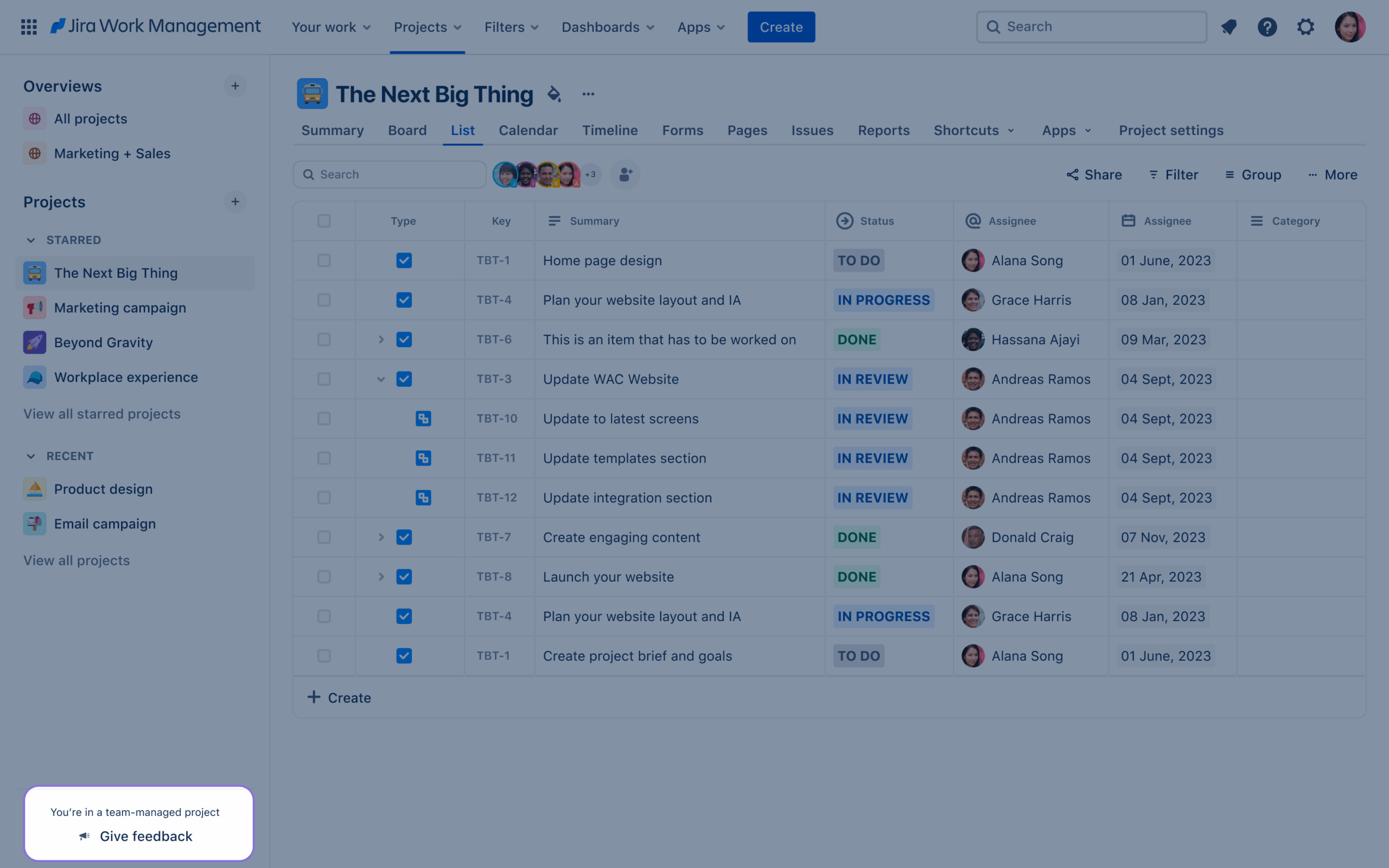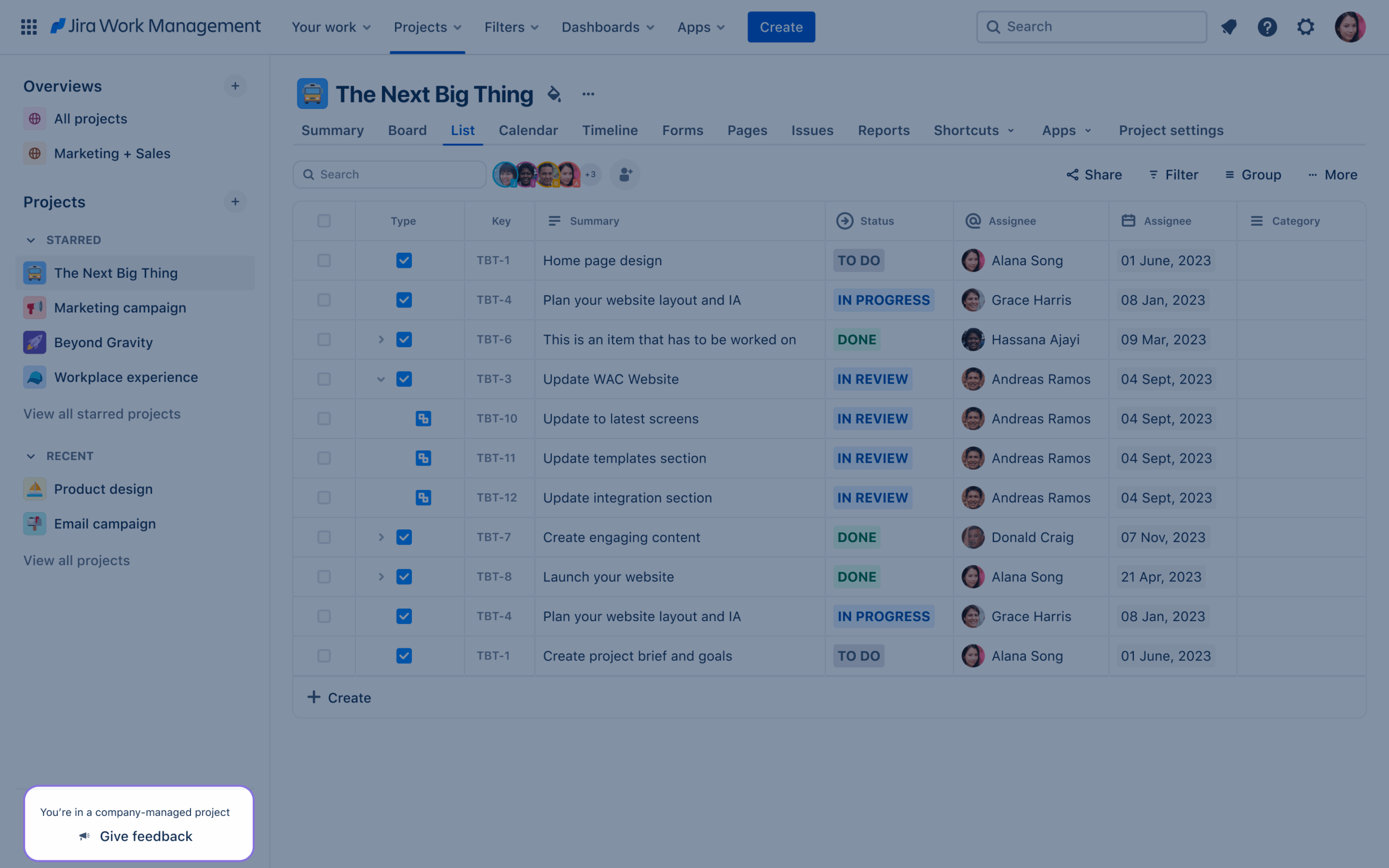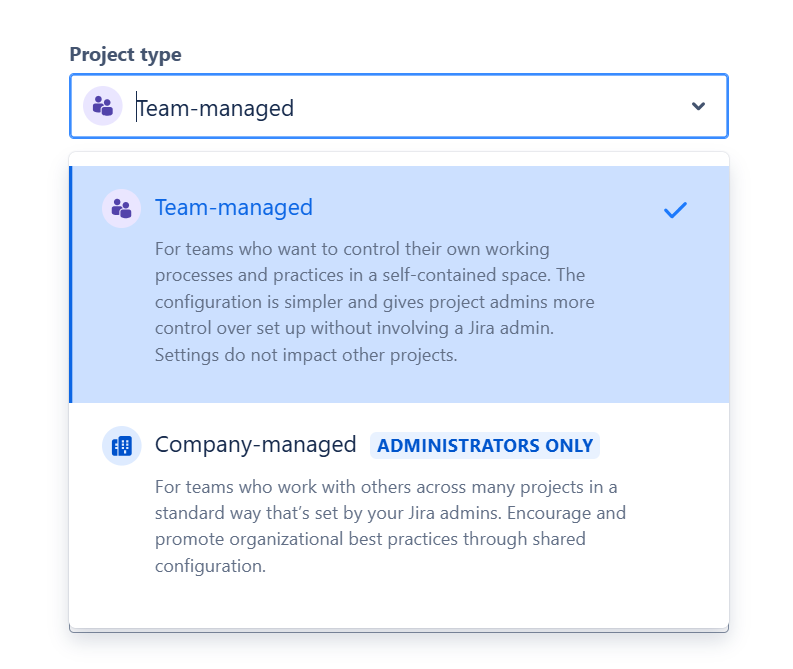Whether you’re just getting started with Jira Cloud or looking to scale your setup across departments, structuring your projects correctly is key to effective collaboration. One of the innovations Atlassian made during the change to their architecture for Cloud is to provide two primary project types: team-managed and company-managed. Each has distinct capabilities and use cases. Knowing when to use each can improve team autonomy, streamline workflows, and avoid chaos as your organization grows. In this blog, we’ll break down the differences, how to identify each type, and offer guidance on when to choose one over the other.
Team-managed vs. Company-managed Projects
At first glance, both project types seem similar. They allow you to track issues, customize workflows, and organize your team’s work. However, when you look closer, they function quite differently in terms of setup, configuration, and governance.
Team-managed Projects
Formerly known as “next-gen,” team-managed projects are built for autonomy. These projects allow any team member (with the right permissions) to create, configure, and run projects without needing a Jira admin. Workflows, issue types, and fields are all managed within the project itself, making it a great choice for independent teams who want to get up and running quickly.
Key traits:
- Easier and faster to set up
- Configuration is self-contained and only applies to that project
- Ideal for agile, fast-moving teams that don’t require complex permissions or standardization
Company-managed Projects
Previously known as “classic” projects, company-managed projects are designed for cross-team collaboration and standardization. These projects use global configuration schemes for things like workflows, permissions, and screens, which are maintained by Jira admins. If your organization has strict governance, compliance, or process alignment requirements, company-managed projects are the better choice.
Key traits:
- Greater control and standardization across multiple projects
- Shared workflows and permission schemes
- Requires Jira admin involvement for changes
How to View Whether a Project is Team-managed or Company-managed
Wondering which project type you’re working with? Here’s how to check:
- Open the project.
- Select the “More actions” (•••) menu next to the project name in the header or sidebar.
- At the bottom of the menu, you’ll see whether your project is labeled as:
- Team-managed
- Company-managed
For admins evaluating multiple projects (especially ahead of migrations to Jira Data Center), you can also:
- Navigate to Settings > System > Backup Manager
- Scroll under “Backup For Server” and screenshot the project list (including issue counts)
- Use this list to identify “problem” projects that need conversion before migrating
When Do You Use Each Project Type?
Choosing the right project structure is about matching it to your team’s maturity, collaboration needs, and scalability goals. Team-managed projects are ideal when you need a fast, lightweight setup that minimizes administrative overhead. These projects are best suited for teams that operate independently and don’t require shared configurations with other departments. With team-managed projects, non-admin users have the flexibility to customize workflows, fields, and screens without relying on Jira administrators, making them highly adaptable. This approach is especially useful for startups, pilot teams, or individual departments such as marketing or HR that need autonomy and simplicity while managing their own processes.
Company-managed projects are the right choice when your organization requires consistency and standardization across multiple teams and projects. They offer centralized control, making them ideal for environments with complex compliance, security, or permission requirements that need admin-level oversight. These projects enable shared workflows, permission schemes, and custom fields across the organization, ensuring uniform processes and governance. This setup is particularly well-suited for enterprises, regulated industries, or IT and DevOps teams that collaborate across several projects and need robust configuration and control.
Structuring Jira Cloud Projects
The key to structuring Jira Cloud for better collaboration isn’t just about choosing between team-managed and company-managed, but aligning each project type with your team’s needs, your organization’s goals, and your governance model. Team-managed projects offer speed and autonomy while company-managed scale, consistency, and control. If you need help determining the right mix for your Jira Cloud environment, as a trusted Atlassian Solution Partner, we can help. Contact us today to explore the best structure for today’s needs while scaling for tomorrow’s growth.
















